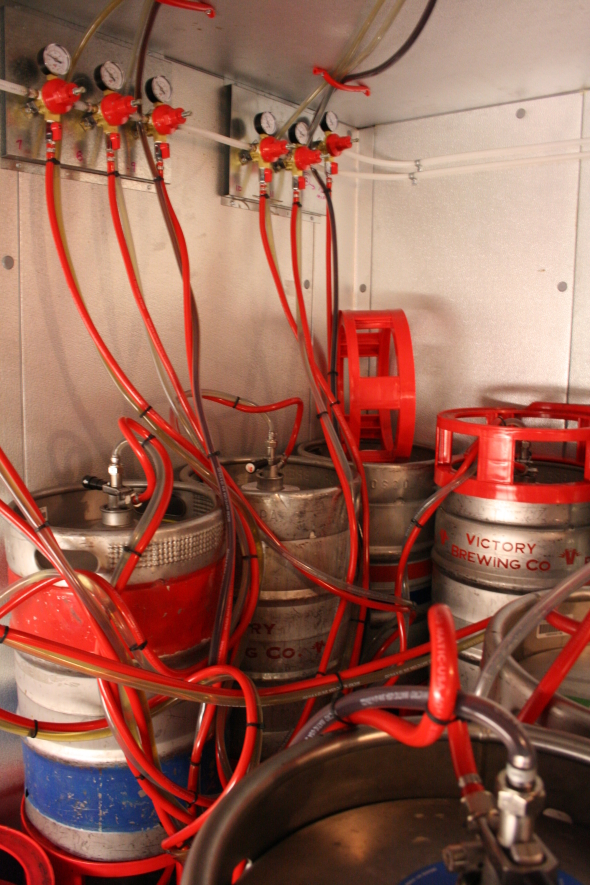Thanks for the math check. That's interesting to say the least, as I always assumed the pressure would drop equally.
So now that I'm thinking about this, let's say I carbed a keg to 2.5vols at 34°F, and keg pressure (disconnected from gas) was a stable 9 psi for several days. If I then took that keg out of the keezer and let rise to room temp, following the same logic the pressure shoud only rise a few psi, correct?
There are two things going on in a pressurized keg when the temperature changes.
The first is the change in gas pressure with a change in temperature. According to the gas law: PV = nRT, where:
P = absolute pressure (not gauge pressure)
V = Volume occupied by the gas
n = number of gas molecules (usually expresses as moles - 6.02E23)
R = constant
T = Absolute temperature (not ˚C or ˚F)
So with "n" and "V" constant, the absolute pressure is proportional to absolute temperature (and 75˚F to 35˚F is a small change on the absolute temp scale.)
Now in a keg you also have the "true gas" vs. "dissolved gas" equilibrium going on. If the head space pressure is higher than the equilibrium pressure for the current amount of dissolved gas at the current temperature, then more gas will dissolve in the liquid, increasing the amount of dissolved gas and decreasing the amount of gas in the head space (the "n" in the head space goes down), so the pressure in the head space goes down. If the pressure is lower than than the equilibrium pressure, then gas comes out of solution into the head space (the "n" in the head space increases), so the pressure in the head space increases. The thing to note is that "n" changes, so the simple "pressure proportional to temperature" no longer applies.
The pressure change in the gas phase is instantaneous with the temperature change. There is no lag time. But, the pressure change due to no longer having the gas phase and dissolved phase in equilibrium does not change instantaneously. It occurs over a period of time until the equilibrium is finally restored. The rate at which the pressure changes is approximately proportional to how far out of equilibrium the system is. The implication of rate being proportional to offset is that the closer you are to equilibrium, the slower things change. The rate of pressure change is also approximately proportional to the volume of liquid in the system (assuming surface cross sectional are is constant with volume changes.) The time constant for equilibrium changes is several days for corny kegs.
So, when you change the temp of an isolated keg, you get a small pressure change instantly (changes as fast as the temperature changes), and a larger pressure change over several days, as the gas/dissolved equilibrium is restored.
The carbonation charts only tell you what the pressures and carb levels are when in equilibrium. They tell you nothing about what is happening when you are in a dynamic state.
Edit:
But wouldn't that conflict with the table that says that a keg at room temp should be 30-32psi for 2.5 vols? Do you see what I'm saying? Maybe a scenairo would help show what I'm getting at and where my confusion stems from:
I have 2 kegs:
- Keg A was carbed for 2 weeks at 34°F at 2.5 vols (thus, ~9psi)
- Keg B was carbed for 2 weeks at 70°F at 2.5 vols (thus, ~30psi)
I then take Keg A out of the keezer and place next to keg 2 for a few days. Now both kegs are at 70°F. However if I check the pressure, Keg A will be around 15psi (based on your explanation above) while Keg B will be at 30psi. Yet they're supposed to be carbed to the same level? Keg A would seem to be in contradiction with the carbonation chart. Why wouldn't it rise to 30psi as well? Is it just a matter of time, say a week or more, for this to happen?
Keg A will rise to 30 psi eventually, but it will take considerably more than two days. So, yes it is just a matter of time.
Brew on







